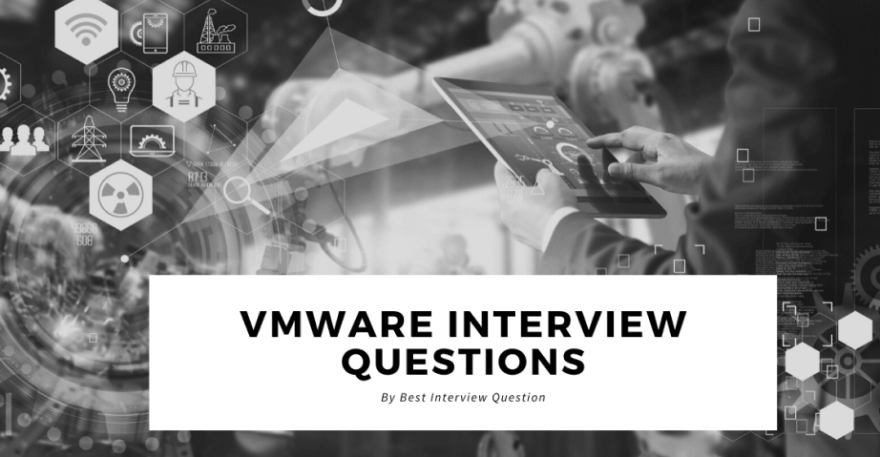VMware Interview Questions and Answers 2023

If you are the one who wants to proceed with your career in the Networking domain and looking for the VMware interview questions, then you landed up at the right place. As per the recent research, the shares of VMware is 13.94% in the market; which is a good number. This clearly shows that there is a great and high number of opportunities in pursuing a career in the same field.
In this article, you will find the list of frequently asked VMware interview questions and answers that have been prepared by the team of professionals in Best interview questions. We hope these questions and answers are going to help you in achieving your dream job in networking.
Most Frequently Asked VMware Interview Questions
Here in this article, we will be listing frequently asked VMware Interview Questions and Answers with the belief that they will be helpful for you to gain higher marks. Also, to let you know that this article has been written under the guidance of industry professionals and covered all the current competencies.
VMware is a tool that provides several software and applications for virtualization. Its products are categorized into 2 levels: server applications and desktop applications.
Benefits of VMware
- It allows running several applications and multiple operating systems on one computer.
- It reduces the total cost to 50% on IT expenditure.
- It enhances the speed of deploying new applications.
- It makes IT management easier and simplified.
There are three types of server software provided by VMware:
- VMware Server
- VMware ESX Server
- VMware ESXi Server
RDM abbreviates to Raw Device Mapping. It is a file that has been stored in VMFS volume that behaves as a proxy for any raw physical device. It also allows us to store the data of virtual machines directly into LUN.
Yes! It has been developed by AWS and VMware that delivers secure and contemporary services which allows the organizations to migrate smoothly.
| Template | Clone |
|---|---|
| It is a master copy of the virtual machine. With this, multiples clones can be made. | It is a copy of the virtual machine. |
| It can be converted back to update the base template | It can't be converted back |
| A template can never be edited or powered on. Even they are much difficult to change than ordinary VMs. | A clone of a VM can be made only in the scenario where the virtual machine is powered on |
NFS stands for Network File System. It is a protocol that has been used for saving the files and later used by the ESXi host for communication with the NAS device.
The snapshot in VMware means the copy of the file of the virtual machine disk that is used to restore the virtual machine at a specific point whenever the system gets failed or the system error occurs.
- Network virtualization
- Presentation virtualization
- Storage virtualization
- Application virtualization
The abbreviation of VDI is Virtual Desktop Infrastructure. It is the application by which the physical machines of the end-users are virtualized whether the desktop or laptop. Once the VDI has used the end-user to connect their desktops by using a device known as a thin client.
| Full Clone | Linked Clone |
|---|---|
| It is an independent virtual machine. | It is made from the snapshot from the parent. |
| It does not need to access or maintain an ongoing connection to the parent virtual machine | A linked clone must access the parent |
| Creating the full clones takes a bit of larger time | It creates the clones quickly |
VMware vSphere Fault Tolerance (FT) gives constant access to applications with the limit of four virtual CPUs by making a live shadow case of a virtual machine that reflects the essential virtual machine. If an equipment blackout happens, vSphere Fault Tolerance naturally triggers failover to wipe out vacation and forestall information misfortune.
The vCenter Server 4.x and vCenter Server 5.x support one virtual CPU per protected VM.
